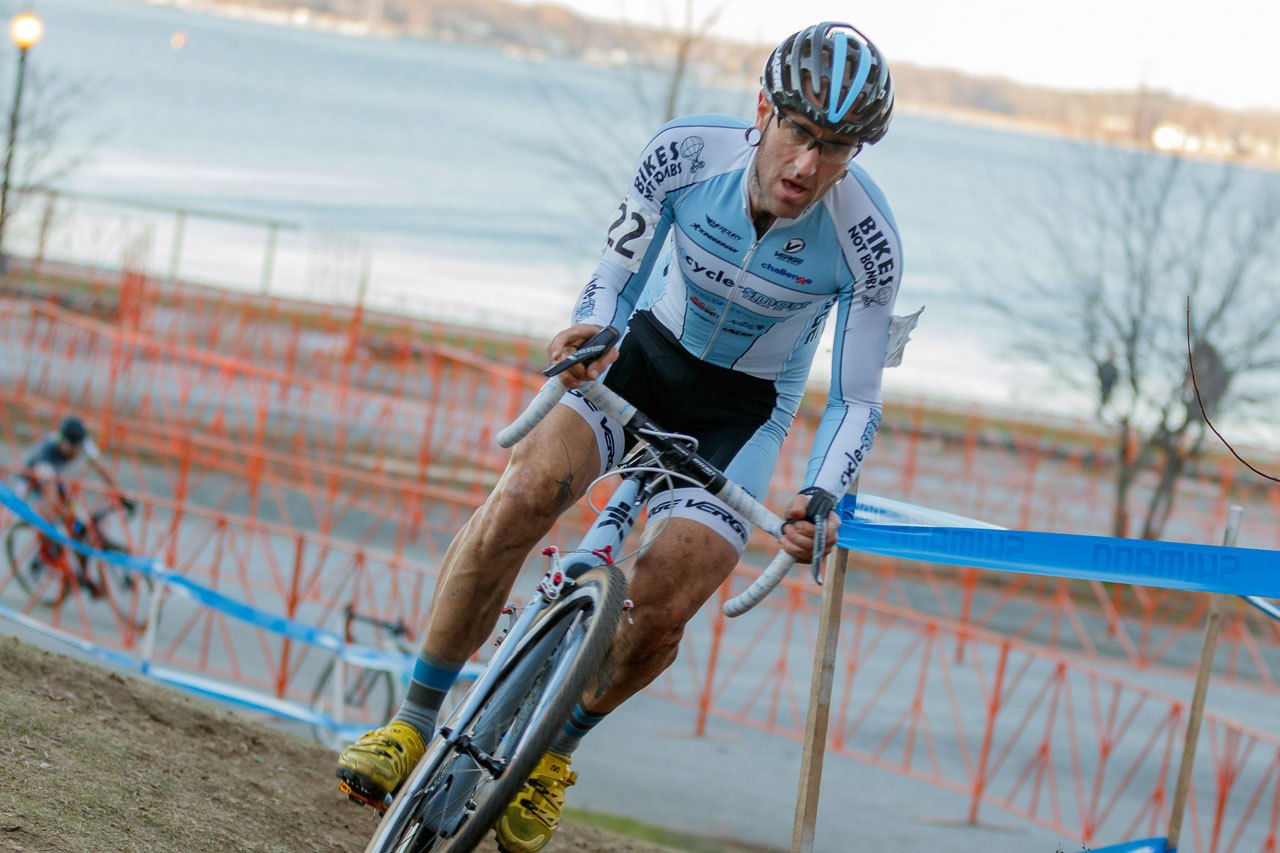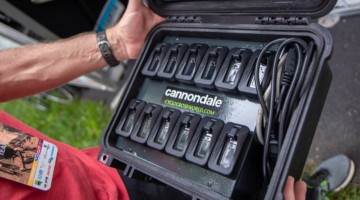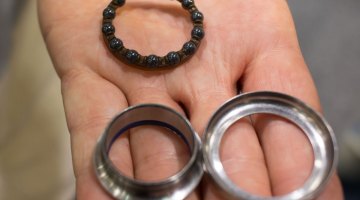
The season is nearly over. All that’s left is nationals. Are you ready to give your best performance yet? Read Adam Myerson’s piece to find out. © Todd Prekaski
It’s been a while since we brought you a Technique Tuesday piece. And with the USA Cycling Cyclocross National Championships around the corner, there’s no time like the present to talk about how best to be primed for that event.
You’ve likely done the training that let you target your “A” races in your local series and perhaps now you have an eye on Asheville. If so, hopefully you’ve made the most of the Holiday season without overdoing it. After all, you’re likely gunning for your best ride yet. As Adam Myers explains below, fresh wins over fit and fatigued as the season draws to a close and you head into your final race. If you enjoy this insight from Myerson, you can find other training ideas and articles at cycle-smart.com, as well as information on internationally-recognized coaching and clinic programs for all skill levels.
by Adam Myerson
This is it people!
It’s the last rush before the big day – just under two weeks before cyclocross nationals. With the continued growth and momentum of ‘cross this year, the pre-registration numbers show a couple thousand of us will be racing next week. For some of it’s the most important race of the year. For others it’s just a chance to compete on the same course as the United States’ best ‘crossers. Whatever your level and goals, it’s time to fine tune and make sure you’re peaking for the event.
The first thing to recognize is that what you’ve got for fitness right now is pretty much what you’ve got; there’s not enough time between today and race day to raise your fitness level through the normal process of stress and recovery. With that in mind, take a step back and evaluate where you are. Are you happy with your form? Are you on the way up, or on the way down? Even if you can’t increase your fitness between now and then, you can make sure you’re feeling as good as possible on race day with the right portions of resting and training.
Going into this weekend and next week, your first priority is to make sure you’re fully and completely recovered from any racing and training you’ve been doing. If you’ve been pushing things by training on a Tuesday after a hard race weekend, this is the week to take a different approach. Rest and recovery are your first priority. Increased fitness from training is useless if it comes with increased fatigue as its price when you’re close to your goal event. Going into nationals, err on the side of rest to make sure you can put out a maximal effort on race day. Underfit and fresh is always better than fit and fatigued, but especially so for an event that matters.
This might mean that you skip this weekend’s races if you’ve been burning the candle at both ends with training and work, or perhaps only race one day even if two events are available. Only race both days if you’re fresh and know you have time to recover after the weekend. Following the weekend, take as many days as you need to be fully recovered, with a minimum of two days easy, and up to a maximum of five, leading into the next race weekend. Ideally, if things are going well, you’ll be ready to do a mid-week workout to keep yourself open, but still allow yourself enough time to recover before the next race.
If you’re able to get this workout done, it should reflect the fact that you’re trying to fine tune a peak. Keep the volume of work low, and try to touch the systems that need maintaining. Motorpacing, or a race-pace ‘cross workout is ideal, but should be undertaken cautiously. The key is not to dig deep in any way, but only do enough work to feel good during the efforts, and hopefully better at the end of the workout than at the start. At the first sign of decreasing quality of your efforts or fatigue, pull the plug and call it a successful day. A typical workout might be 1.5 hour ‘cross ride, with an easy warm up, perhaps 10 minutes of tempo riding on a ‘cross course to warm up, a few run-up or practice start sprints, and one 15-20 minute threshold invterval to maintain threshold power. If you’re trying to open things up rather than maintain, two to four 5-minute VO2max intervals might be a better choice than the single threshold block.
Going into the race weekend one week before nationals, open up the day before the race with some light intensity, and use the race itself to think about and implement the kind of ride you’re hoping to have at nationals. Do you need to work on your starts? Your speed changes? Your ability to ride in a group, or to attack? Look for the places you’ve been weak during the season, and when faced with those situations in these final races, take some chances. Use these opportunities to turn a weakness into a strength and build some confidence.
The week of nationals, you can take the same approach to recovery and your mid-week workout as the week before. Depending on when you plan to arrive and what day your race is, try to take some time to evaluate the course, both slowly and at race speed. The day before your event, do your opening up workout on the course, taking at least one laps at threshold, close to race speed. Lines you chose while warming up or looking at the course might turn out to be impossible or unwise at full blast, so seeing the course from a race-pace perspective is crucial.
On race day, don’t make the mistake of changing your routine just because it’s a big day. Remember, it’s just a bike race, no different from any other race you did this season. You should eat what you normally eat for breakfast, warm up at the same time and in the same manner, and use equipment you’ve already raced with. All the same things that can happen in a local race can happen at nationals. You can flat, crash, win – whatever. Control the things that are in your power, and focus on having a “usual” day, assuming that you usually put your best effort forward every time you race.
And of course, good luck!




























